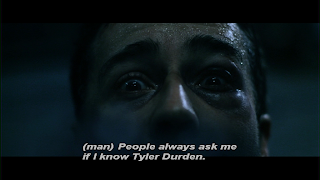In researching into the codes and conventions of opening and title sequences of films, I nearly always found on media sties and in books from my school library, that the opening of a film aims to set the scene for the entire film and also makes clear the film's genre to the audience.
Further research and analysis into this idea of establishing the genre, I found that certain genres of films have obvious codes and conventions of their own to secure the genre for the audience. For example Action adventure films begin with an explosion or gun shot of some sort, signifying the action adventure genre and introducing the film. Another example would be a rom com film, which begins with an establishing shot of a the setting (usually a city or workplace) and then continuing with shots showing the daily routine of the central character, either male or female. This introduces the film and also will show the titles throughout.
Here is a rom com example in the film pretty woman.
Here is a rom com example in the film pretty woman.
Then the camera continues show the daily routine of the main character. Then, as the camera continues to move around other characters, it shows the location the film is set. Hollywood.The film then introduces two of the main actors and then the title of the film.
One code in particular is used very often in films and that is the Enigma Code. In a simple definition, an Enigma Code is a way of pulling in the audience. It can not only be used in film openings but also in trailers as it sets a tone of mystery which is used to hook the audience into wanting to see it or in the case of film openings, make the audience continue to watch with an interest. This code is often used in film openings by using a flashback technique of having the first scene in the 'present' or for it to reoccur later on in the film. The 'flashback' or look on the plot from another perspective is used after the opening scene, giving the audience an insight into what has occurred before and therefore enticing them.
An example of the Enigma Code in an opening scene would be in David Fincher's 1999 cult classic Fight Club where it begins with Edward Norton's character tied up in a dark room with a gun pointed in his mouth, obviously after a rough beating and with his character narrating 'People always ask me if I know Tyler Durden'. The mise-en-scene of the room, clothing and bruises and cuts over the character entice in the audience into wanting to know what has happened to the character for him to be in this state. The narration also hooks the audience, introducing a character's name 'Tyler Durden' causes a mystery to the audience and some interest into his involvement into the characters current situation.
A simpler example of this from my own mind would be a film opening with a town or city in total destruction without a population, so lots of abandon shops and vehicles but then, a single person would be revealed, being healthy and alive. This form of the Enigma Code would cause the audience to have an interest into what has happened to the setting and where the normal everyday life involving people has gone to and why.
In the Enigma Code I briefly mentioned the 'flashback'. Most flashbacks occur after the first scene of the film, so technically speaking the first scene is the flash forward. This is another commonly used convention in opening scenes. By opening with the first scene which chronologically is a 'flashfoward', this confuses the audience by not letting them know the whole plot.
This convention usually occurs in two different ways. An opening scene which involves a narration over the film by a main character who explains what has happened before this current scene or introduces them- both connect with the audience as they are directly speaking to them which involves them into the film and character's situation. The other way the flashback opening scene convention is used, frequently involves a usual opening scene involving dialogue between two or more characters in a situation which will later on coincide with the overall plot. After both of these opening sequences, the films move on to the plot which has occurred before the first one. Later on the first scene is revisited, sometimes in a different manner of angles or the dialogue is slightly changed to give a different perspective now the plot has been explained and in some instances the film points out that is is a flash back to create humour and connect with the audience (eg. Fight Club). Though, in most instances of the flash forward/flashback technique, the first scene is revisited without any change from the first viewing.






No comments:
Post a Comment